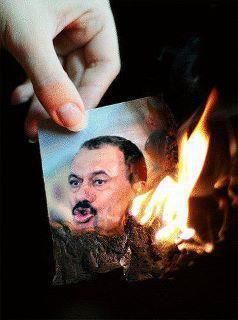What Every Translator
Should Know ?
The nature and importance
of translation
Translation is ultimately a human activity which
enables human beings to exchange ideas and thoughts regardless of the different
tongues used. Al Wassety (2001) views the phenomenon of translation as a
legitimate offspring of the phenomenon of language, since originally, when
humans spread over the earth, their languages differed and they needed a means
through which people speaking a certain language (tongue) would interact with
others who spoke a different language.
Translation is, in Enani's (1997) view, a modern
science at the interface of philosophy, linguistics, psychology, and sociology.
Literary translation in particular is relevant to all these sciences,
audio-visual arts, as well as cultural and intellectual studies.
There are eight types of translation
1- word-for-word translation,
2- literal translation
3-faithful translation
4-semantic translation,
5-adaptive translation
6-free translation
7- idiomatic translation
8-communicative translation.
Translation is, in Chabban's words (1984:5), "a finicky job," as
it has not yet been reduced to strict scientific rules, and it allows for the
differences that are known to exist between different personalities.
Translation is a heavily subjective art, especially when it deals with matters
outside the realm of science where precisely defined concepts are more often
expressed by certain generally accepted terms.
In the final analysis, translation is a science, an art, and a skill. It
is a science in the sense that it necessitates complete knowledge of the
structure and make-up of the two languages concerned. It is an art since it
requires artistic talent to reconstruct the original text in the form of a
product that is presentable to the reader who is not supposed to be familiar
with the original. It is also a skill because it entails the ability to smooth
over any difficulty in the translation, and the ability to provide the
translation of something that has no equal in the target language.
In
translation, the richness of
vocabulary, depth of culture, and vision of the translator could certainly have
very conspicuous effects on his/her work. Another translator might produce a
reasonably acceptable version of the same text, which, however, may very well
reflect a completely different background, culture, sensitivity, and
temperament. Such differences cannot, in Chabban's view (1984), detract from
the merit of either translator. This is simply because translation is decidedly
a more difficult job than creation.
Translation problems
Translation
problems can be divided into linguistic problems and cultural problems: the
linguistic problems include grammatical differences, lexical ambiguity and
meaning ambiguity; the cultural problems refer to different situational
features. This classification coincides with that of El Zeini when she
identified six main problems in translating from Arabic to English and vice
versa; these are lexicon, morphology, syntax, textual differences, rhetorical
differences, and pragmatic factors.
Another level of difficulty in translation work is
what As-sayyd (1995) found when she conducted a study to compare and assess
some problems in translating the fair names of Allah in the Qu'ran. She pointed
out that some of the major problems of translation are over-translation,
under-translation, and untranslatability.
Culture constitutes another major problem that faces translators. A bad
model of translated pieces of literature may give misconceptions about the
original. That is why Fionty (2001) thought that poorly translated texts
distort the original in its tone and cultural references,
while Zidan (1994) wondered about the possible role of the target culture
content as a motivating variable in enhancing or hindering the attainment of
linguistic, communicative and, more importantly, cultural objectives of EFL
(English as a Foreign Language) education. Hassan (1997) emphasized this notion
when he pointed out the importance of paying attention to the translation of
irony in the source language context. He clarified that this will not only
transfer the features of the language translated but also its cultural
characteristics.
The translator's work
These problems, and others, direct our attention
to the work and the character of translators, how they attack a text so as to
translate, and the processes they follow to arrive at the final product of a
well-translated text in the target language.
Enani (1994:5) defines the translator
as "a writer who formulates ideas in words addressed to readers. The only
difference between him and the original writer is that these ideas are the
latter's". Another difference is that the work of the translator is even
more difficult than that of the artist. The artist is supposed to produce
directly his/her ideas and emotions in his/her own language however intricate
and complicated his/her thoughts are. The translator's responsibility is much
greater, for s/he has to relive the experiences of a different person. Chabban
(1984) believes that, however accurately the translator may delve into the
inner depths of the writer's mind, some formidable linguistic and other
difficulties may still prevent the two texts from being fully equivalent.
Therefore we do not only perceive the differences between a certain text and
its translation, but also between different translations of the same text
- On the procedural
level, El Shafey (1985:95) states: "A translator first analyzes the
message, breaking it down into its simplest and structurally clearest
elements, transfers it at this level into the target language in the form
which is most appropriate for the intended audience. A translator
instinctively concludes that it is best to transfer the "kernel
level" in one language to the corresponding "kernel level"
in the "receptor language."
.
Translators are advised to use the
following strategies in the analysis stage:
- Identify beginnings
and endings of ideas in the text and the relationships between these ideas.
- Identify the "best" meaning that fits into the
context;
- Identify the
structure in the Target Language that "best" represents the
original;
- Identify transitions
between ideas and the "best" connectors in the target language that represent the original.
Composing skills - At this point, the
mental construction resulting from interpretation seeks an outer
expression.
- Osimo (2002) suggests
that, in this expression stage, there are two substages. One is aimed at
expression, the other at cohesion. The translator, having finished his/her
interpretative work, has two needs: first, to externalize the set of
impressions caused by the text and translate into
speech elements the impressions the mind produced by contact with the
prototext; and second, to make this product coherent within itself, i.e.,
transform the set of speech elements into a text (the metatext).
- He describes
the passage from mental content to written text in these terms:
- pinpointing elements
useful for discrimination of the
content to be expressed from similar contents;
- pinpointing redundant
elements;
- choice of words
(lexicalization) and attention to their cohesion (inner links);
- choice of grammatical
structure(s); linear order of words; parts of speech; sentence complexity;
- prepositions and
other function words, and final form.
- As a novice
translator, or a student translator, you are invited to make use of the
following basic strategies:
- Use correct word
order as used in the target language.
- Use correct sentence
structures as used in the target language.
- transmit the ideas of
the text in clear sentences in the target language.
- Rephrase certain
sentences to convey the overall meaning translated;
- Make changes to the
text as a whole to give it a sense of the original without distorting the
original ideas.
- Try one or more of
the following strategies when facing problems of untranslateability.
- Syntactic strategies:
- Shift word order. Change clause/sentence structure. Add or
change cohesion.
Semantic strategies: Use superordinates. Alter the level of abstraction. - Redistribute the
information over more or fewer elements.
Pragmatic strategies: Naturalize or exoticize. Alter the level of explicitness. Add or omit information.










